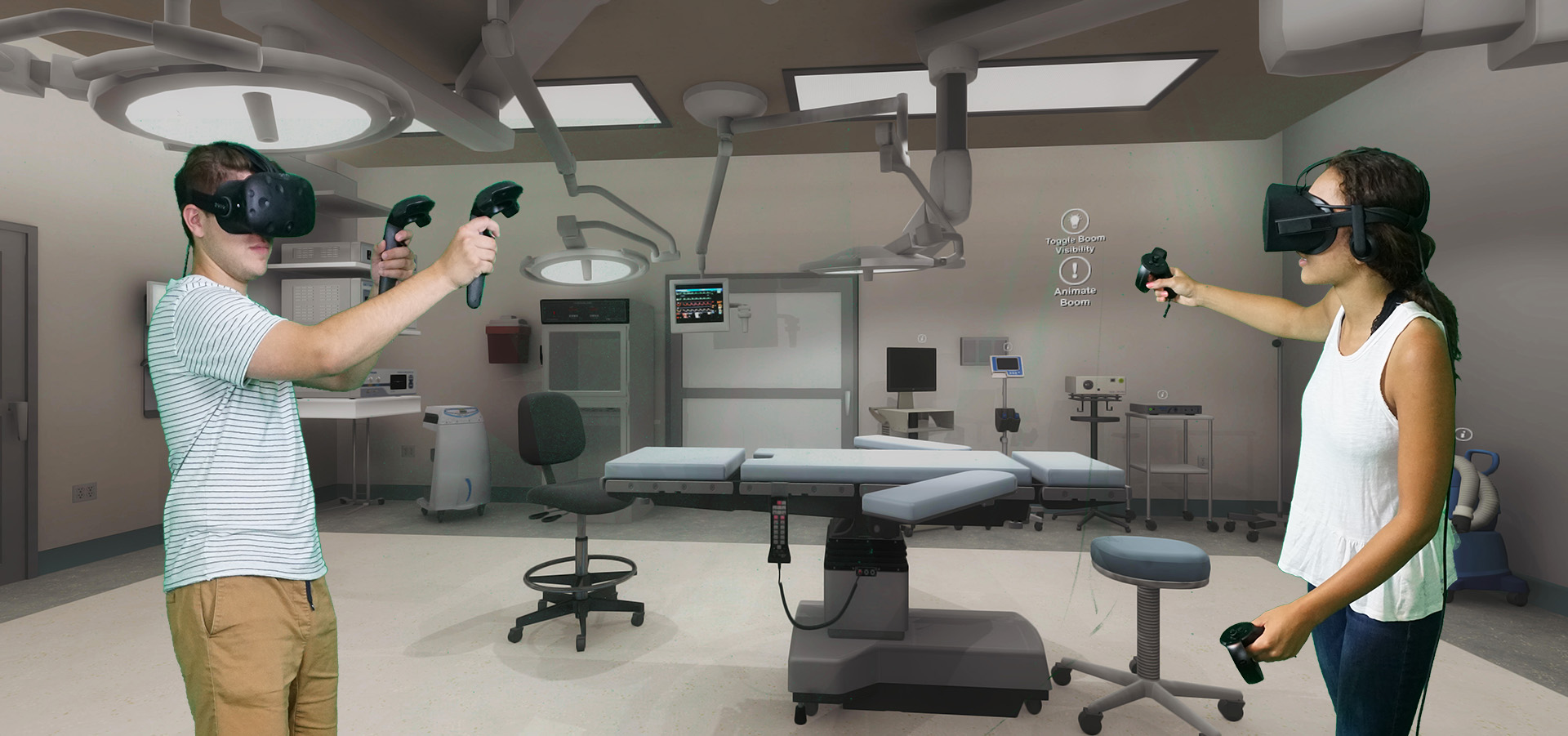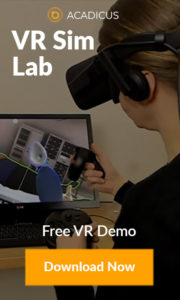
Virtual Reality, once a curiosity for architectural use, has quickly become an indispensable tool for designing, constructing, developing, and finishing interiors of architectural projects all over the world. Building owners are starting to require VR visualization as part of proposals, real estate developers are pre-selling spaces before they break ground, and architects are discovering an entirely new way to conceive of design concepts.
If you’re a BIM or VDC manager, or in a position to introduce VR to your company, there are now lots of options for bringing architectural projects into VR, with only two main decisions you need to make. First is which hardware are you going to use, and the second is how will you get your project into VR?
Let’s take a look at hardware first.
Lightweight VR
On the lightweight, wireless end of the spectrum you have Samsung GearVR, Google Cardboard, and a myriad of under-$100 plastic variations of the same. With these options, there’s a greater risk of motion sickness, since it tracks a limited range of motion, and you’re always limited to the processing power of your mobile device (which serves as the display held within these devices). This ultimately yields a much lower level of quality and realism due to these technical limitations, which is particularly relevant in architectural projects where realism is key.
To get around these limitations, the most common trick is to render static 360 panorama views instead of truly interactive VR, this method has it’s own significant drawbacks and really isn’t true VR. The cost and convenience of these mobile options are tough to beat, but issues of proportion and scale distortion are hard to ignore. As an entry level option, these are great, but if you’re serious about true architectural immersion and interactivity in VR, you’ll want to look into higher end options.
High End VR
On the high end of the spectrum, the primary options are HTC Vive and Oculus Rift. These solutions can track full ‘room scale’ motion, with hand tracking options that open a whole new world of interactivity in VR. This is where VR goes beyond passive architectural visualization, and the environment can actually be manipulated. You can move furniture around, and even reach out and sketch 3D ideas directly in VR. It’s a whole new world that you have to see to believe, and we’re just getting started.
These high end options are less portable, and connects via a wire to a modern PC to run it. If you don’t already have a good PC, you’ll need to invest around $2,000 to get everything you’ll need to get started (including the headset). Don’t let the up-front cost scare you though, this is a revolutionary way to approach architectural design, construction and promotion, and you definitely won’t regret it. Anyone who has tried a Vive or a Rift will attest to the value a high end VR system can bring to any AEC project.
How do you get your project into VR?
There are two main directions you can go about getting your architectural project into virtual reality, or you may also choose a combination of these two options.
DIY In-House
If you have the in-house technology resources available, some companies are learning how to bring architectural models into VR on their own.
There are a variety of automated solutions available that your tech-minded staff can learn to use. If you want to enjoy even more control over the project, you can optionally learn the well documented process of importing architectural models into Unity and publishing a VR application. Once past the learning curve, the pipeline into VR can be done in a matter of minutes for quick views into your project.
These solutions are generally best suited to smaller scale projects, like a residential interior, or a single lobby space, and often struggle to adequately represent complex or very large projects at a reasonable quality.
The advantage of these DIY or 1-click approaches is speed and cost. You get a quick and cheap glimpse into your project with minimal hassle. The disadvantage is, the results will generally look quick and cheap. These automated solutions all have in common a fairly low fidelity look that’s a bit like computer graphics from several years ago, lacking a high degree of realism.
If all you want to do is take a quick peak in VR at your design as it’s taking shape in schematic design, then an automated or DIY approach is the way to go. But when you have a project that needs to be represented at the highest possible quality, requires custom functionality, or inclusion of specific furniture, finish and fixture selections, you’ll need to look elsewhere.
Hire a Pro
The truth is, making a building look amazing in VR is an important craft that we take very seriously. If you want quality, someone with experience needs to pay attention to detail with your project if the goal is to achieve a highly realistic experience.
Even if you can automate porting your architectural model into VR, is your BIM file really in a state that will look great and adequately represent your vision for the project if viewed in immersive 3D space? As most VDC or BIM managers well know, the vast majority of Revit and other architectural model formats are simply not drafted in a way that will make sense in VR, no matter how many clicks it takes to get it there. Someone needs to pay attention to detail, lighting, physically accurate representation of materials, correct furnishings and fixture selections, and more.
This is when it makes more sense to bring in a professional VR developer. Arch Virtual specializes in creating premium virtual reality applications for architectural projects. We have an experienced team, an efficient workflow, and our own Immerse platform enables us to quickly add interactivity, navigation and multi-player options to our projects, depending on their specific needs.
How does it work?
First, send us a note with some information about your project. Upon reviewing your reference files (Revit, SketchUp, PDF blueprints or even napkin sketches will do), we will provide you with a detailed estimate of the cost of bringing your project into VR.
The first thing we’ll need to do is dial in on which ‘Featured Spaces’ you wish to see in VR. It can be cost prohibitive to render an entire building, but there are often key spaces that make sense to render at the highest possible quality. Some projects are focused exclusively on the exterior. Others are only about interior spaces, and some are a combination of the two. As you initiate your VR project, think through which areas of the building you’d like to prioritize.
We’ll need to know if furnishings, fixtures and finishes have been selected. If they have, is it important that they are represented exactly within the model? Or, can we use furnishings and fixtures from our asset library at a lower cost?
With your green light on our estimate, we prepare a Statement of Work for you to review and commence development accordingly. You’ll be seeing a first iteration of your project in VR within a few days.
How much does it cost?
Costs vary widely for high quality VR, from $5,000 to $150,000. It all depends on the scale and complexity of the design, and how much interactivity or custom features are required.
As you’re deciding who to work with, it’s absolutely critical that you ask to see actual examples of their previous work, and to talk with client references. We are routinely brought in to repair and finish projects where another company over-promised, but were unable to complete the assignment on time or within budget. Check references, and be sure you’ve seen some their previous work in VR.
Who Pays for It?
Every project is different. Sometimes, a construction company commissions the VR application to ensure the client knows exactly what they’re about to build. Architects will use VR to help sell a design idea in early schematics. Real estate developers will use it as a marketing tool. In some cases, a building owner’s marketing department will pitch in funding for the project if they’re able to use images and VR application to help sell the building during construction. In any case, a building owner who has had the opportunity to try a high end VR system is the most likely to fund development. Buildings are a risky, costly undertaking, and building owners have a lot at stake to be sure they get it right.
Exploring the building virtually is a modest expense compared to the cost of construction.
Summary
In this article, I described the benefits and drawbacks of lightweight and high quality VR systems. I also described options for getting your project into VR, from DIY or automated solutions to hiring a professional. Finally, I touched on some specifics of how it works to commission a VR project, and the costs associated with the same.
If you’re interested in learning more about bringing your architectural project into VR, please send us a note: https://archvirtual.com/contact
See you on the virtual frontier!
Jon Brouchoud
Founder and CEO at Arch Virtual.











